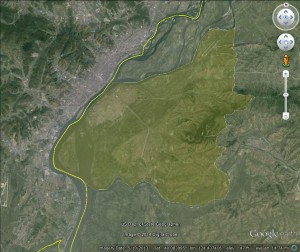Institute for Far Eastern Studies (IFES)
2014-3-12
North Korea has been actively working to procure large quantities of fertilizer since the beginning of 2014 in an effort to increase production in the agricultural sector. According to statistics provided by the Korea Rural Economic Institute, North Korea imported 35,113 tons of Chinese fertilizer in January 2014.
In January and February of recent past years, North Korea imported small, insignificant amounts of Chinese fertilizer — for example, a mere two tons in January 2013. This year’s sudden increase comes as an unexpected surprise. January imports of Chinese fertilizer doubled that of imports procured in December 2013, increasing by 17,416 tons. This comes in spite of the fact that total imports of Chinese fertilizer decreased 18 percent from 252,789 tons in 2012 to 207,334 tons in 2013.
In the past, the North Korean pattern has been to import Chinese fertilizer from March and peak during the April-to-July farming season. Import figures show that North Korea has begun to procure its fertilizer earlier than usual, beginning in January and February. This vigorous importing of fertilizer could be directly connected to North Korea’s efforts to increase agricultural production to solve the nation’s chronic food shortages.
In his 2014 New Year’s speech, North Korean leader Kim Jong Un pledged to rebuild the country’s moribund economy, emphasizing the agricultural sector in this endeavor. In his letter to last month’s national conference of subworkteam leaders, he also emphasized the need to boost agricultural production in order to attain self-sufficiency.
Subsequently, it is expected that North Korea will actively scale up imports of Chinese fertilizer again this year in correlation with Chinese export tariff cuts.
Trade between North Korea and China in January has increased roughly 16 percent against the previous year. After the December 2013 purge of Jang Song Thaek it was predicted that trade between the two countries would decrease; however, there is no visible sign of this yet.
According to the Korean Foreign Trade Association’s data, trade between North Korea and China in February increased from 471 million USD to 546 million USD, up 15.9 percent compared to the previous year.
February also showed an increase in anthracite exports, North Korea’s main export to China, rising 21.3 percent to 102 million USD. Iron ore exports also showed a slight increase of 35 million USD compared to last year.
Chinese exports to North Korea, including leading export commodities such as cellular phones and other wireless radio/communication devices, increased 28 percent compared to January of last year, totaling 14.5 million USD. In February, goods exported through China to North Korea increased by 10.2 million USD, a 38.6 percent increase compared to January of last year.

